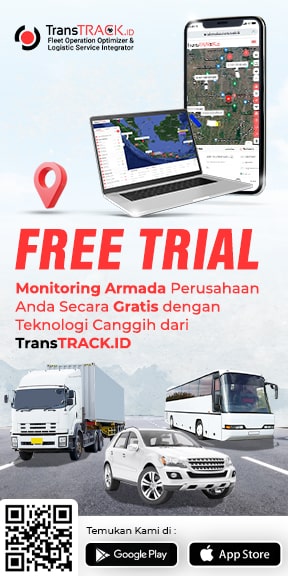What are the Procedures for Loading and Unloading of Containers, Ports, and Warehouses?
Posted on December 20, 2024 by Nur Wachda Mihmidati

“Loading and Unloading” is a term often used in the shipping and logistics industry to describe the process of loading and unloading from ships, aircraft or other transportation vehicles. This is an important stage in moving goods from one location to another.
This process involves taking goods from ships or transport vehicles and transferring them to storage or their final destination. This process is carried out using special equipment such as cranes, forklifts or conveyors to facilitate the handling of heavy or large goods.
In a broader context, this process can also refer to the process of opening or removing the contents of a container, container or package sent via a shipping service. This involves opening the cover, opening the package, and removing the item from inside.
This efficient and organized process is essential to ensure goods arrive safely and on time. Usually, the logistics company or the party responsible for loading and unloading will have standard procedures and appropriate equipment to carry out this task effectively. Check out the full article in the following TransTRACK article!
Loading and Unloading Procedure
Well, this time we will learn about this procedure itself. You can learn about this procedure below:
Container procedures
The following is the procedure for this procedure for containers:
Preparation
Before starting the this process, it is necessary to make preparations first. This includes checking shipping documents associated with the container, such as a Bill of Lading or Packing List, to verify the contents. Then, the container is visually inspected to ensure it is in a safe condition and that there is no damage that might affect the goods inside.
Equipment Preparation
After initial preparations, the necessary equipment for this procedure is prepared. This can include cranes, forklifts, cranes or other lifting equipment, according to the size and weight of the goods to be loaded and unloaded. Make sure the equipment is in good condition and checked regularly to meet safety standards.
Container Security
Before the container is opened, security needs to be carried out so that the container remains stable and safe during this procedure process. This involves securing the container with the help of a lock or other locking system, so that there is no risk of leakage or falling of the goods when the container door is opened.
Unloading
After the safety measures were completed, the container door was carefully opened. The cargo inside is then unloaded using suitable lifting equipment. Loaded and unloaded goods must be handled with care to prevent damage or loss. If necessary, identification and recording of goods can be carried out when loading and unloading.
Temporary storage
After the goods have been unloaded from the containers, they will be placed in a temporary storage area. In the case of this procedure of containers at the port, this may be in the temporary container stacking area before they are shipped to their final destination.
Documentation and Reporting
During this procedure process, it is important to record and report the number of goods being loaded and unloaded, the condition of the goods, and to verify compliance with shipping documents. This documentation is important for accounting purposes, inventory control, and insurance claims in the event of damage or loss of goods.
Procedures at the port
Port this procedures involve similar steps to container loading and unloading, but can be of greater scale and complexity as they involve different types of ships and different cargoes. Some of the common steps in the port of this procedure include:
Document Check
Shipping documents such as Bill of Lading and Packing List are checked to verify the quantity and type of cargo expected.
Equipment Preparation
Equipment such as cranes, cranes or other lifting equipment are prepared according to this procedure needs encountered.
Loading and Unloading
Goods are loaded or unloaded from the ship using suitable lifting equipment. This procedure is usually carried out with careful coordination to ensure safety and efficiency.
Temporary storage
Goods unloaded from the ship are then placed in temporary storage areas at the port before being transported to their final destination.
Procedures at the Warehouse
This procedure at the warehouse depends on the type of cargo being unloaded, the size of the warehouse, and existing storage requirements. In general, the loading and unloading procedure at the warehouse involves the following steps:
Document Check
Shipping documents and product orders are checked to verify their contents and ensure consistency with what was received.
Equipment Preparation
Equipment such as forklifts, cranes or conveyors are prepared according to the type and size of goods to be loaded and unloaded.
The transfer of goods
Goods are unloaded from transport vehicles or containers using appropriate lifting equipment. The goods are then transferred to the designated warehouse storage area.
Warehouse Storage
Goods are placed in appropriate storage areas within the warehouse, taking into account factors such as safety, efficient organization and taking into account special needs such as cold storage or sensitive cargo.
Inventory and Reporting
Goods that are unloaded at the warehouse must be recorded and inventoried to control inventory and facilitate tracking when needed. This information is also used for stock management and financial reporting purposes.
It is important to note this procedures may vary depending on company requirements and policies, type of cargo, and applicable local or international regulations.
What are the loading and unloading activities
This procedure activities involve a series of tasks related to moving cargo from the transport vehicle to its storage location or final destination. Some of the activities related to loading and unloading include:
Loading
Loading involves the process of loading cargo into a transport vehicle, such as a truck or container. This involves efficiently and safely managing loads within the vehicle to prevent damage or loss during transportation.
Demolition
Unloading is the activity of removing cargo from the transport vehicle after reaching its final destination. Loads are unloaded carefully using lifting equipment such as forklifts, cranes or cranes according to the needs and characteristics of the load.
Identification and Inspection
During this procedure, cargo is identified and inspected to ensure compliance with shipping documents. This involves comparing the quantity, type and condition of the cargo with the information recorded in the relevant documents.
Storage or Distribution
After this procedure, cargo can be stored in warehouses or directly distributed to its final destination. If stored in a warehouse, loads are neatly stored and labeled for easy access and identification.
Efforts to Improve Loading and Unloading Efficiency
The loading and unloading process plays an important role in the logistics chain and distribution of goods. Efficiency in its execution not only affects the delivery time of goods, but also contributes to reduced operational costs and improved customer satisfaction. Here are some steps that can be taken to improve the efficiency of the loading and unloading process:
1. Utilization of Modern Technology
- Equipment Automation: Using technologies such as automated cranes, conveyors, and robotics to speed up the loading and unloading process. These technologies can reduce dependence on manual labor.
- Internet of Things (IoT): Installation of IoT sensors on loading and unloading equipment can provide real-time data on the condition of goods, tool productivity, and potential damage.
- Port Management System: This system enables the automatic setting of loading and unloading schedules and is integrated with other logistics actors.
2. Workforce Training and Development
- Provide regular training to loading and unloading equipment operators so that they understand the latest technology and safety standards.
- Improve time management and coordination skills to speed up the process without compromising quality or safety.
3. Equipment and Infrastructure Optimization
- Periodic Maintenance: Ensure all equipment such as forklifts, cranes, or conveyors are in optimal condition through regular maintenance.
- Adequate Infrastructure: Build spacious terminals, good road access, and warehouses with sufficient capacity to support a smooth loading and unloading process.
4. Implementation of Standard Operating Procedure (SOP) System
- Establish clear and standardized SOPs for all loading and unloading processes, including goods security measures and document checks.
- Ensure that SOPs are socialized to all parties involved in order to create harmony in the implementation of the work.
5. Use of Big Data and Analytics
- By leveraging big data, companies can analyze loading and unloading patterns, such as busiest times or potential delays.
- These analytics can be used to optimize operation schedules, predict manpower requirements, and reduce waiting time for ships or vehicles at the port.
6. Inter-Stakeholder Cooperation
- Strengthen communication and coordination between shippers, receivers, stevedoring operators and port authorities.
- This collaboration can reduce schedule conflicts, ensure equipment and labor readiness, and speed up administrative processes.
7. Implementation of Environmentally Friendly Technology
- Using energy-efficient and low-emission loading and unloading equipment to support efficient and sustainable operations.
- Reducing the carbon footprint can improve the reputation of the port or logistics company in the eyes of clients.
8. Development of Goods Tracking System
- GPS or RFID-based tracking systems enable real-time monitoring of the position of goods, so that consignees can prepare for storage or distribution on time.
By adopting the above measures, the efficiency of the loading and unloading process can be significantly improved. Not only does it reduce operational costs, but it also helps create a more integrated and competitive logistics ecosystem in the era of globalization.
One system that can assist loading and unloading activities is TransTRACK, namely the Truck Appointment System. TransTRACK is a platform used to organize and manage appointments between haul trucks and loading and unloading facilities, such as ports or warehouses.
By using a Truck Appointment System such as TransTRACK, companies can improve loading and unloading management by increasing efficiency, reducing waiting times, and minimizing unnecessary operational disruptions. Start using TransTRACK for better company operations!
Topic :
 Bahasa Indonesia
Bahasa Indonesia








